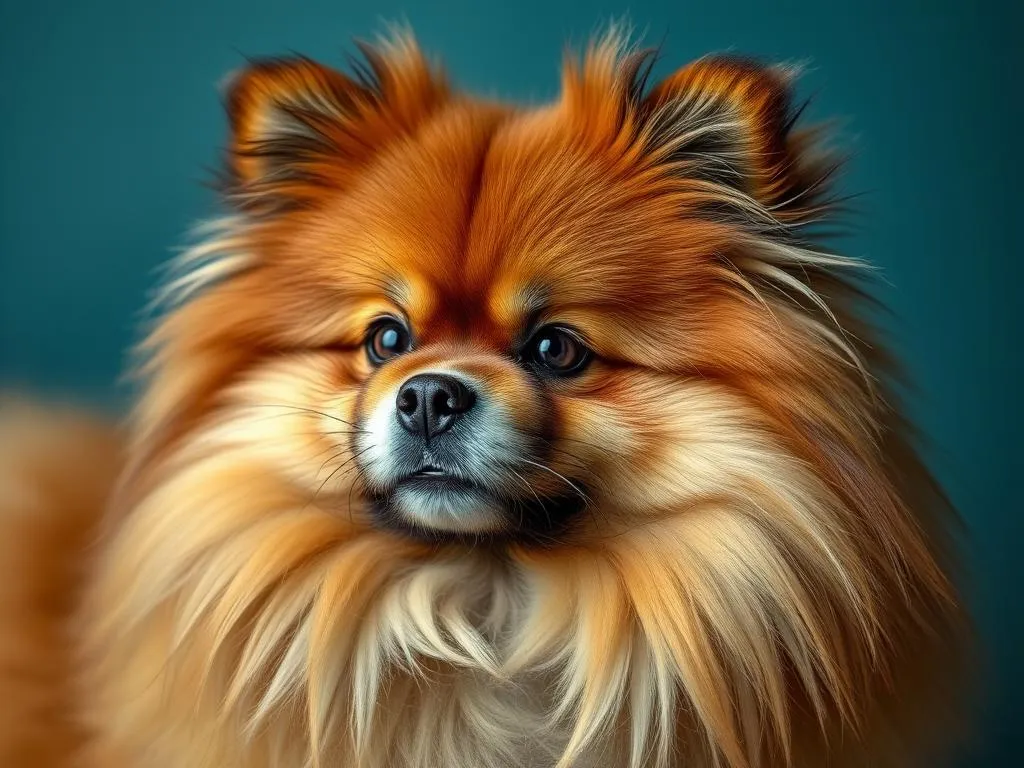
Pomeranians are undeniably one of the most adored toy breeds, known for their fluffy coats, playful personalities, and charming demeanor. These small dogs come in a variety of Pomeranian colors, each adding a unique flair to their already captivating appearance. Understanding these colors is not just about aesthetics; it can also influence your lifestyle choices and how you care for your furry friend.
Understanding Pomeranian Colors
What Are Pomeranians?
Pomeranians are a small breed of dog that belong to the Spitz family. They typically weigh between 3 to 7 pounds and stand about 6 to 12 inches tall at the shoulder. With their lively personalities and intelligence, Pomeranians make excellent companions. They are known for their extroverted nature, often displaying confidence that belies their small size.
The Genetics of Pomeranian Colors
The stunning array of Pomeranian colors is a result of complex genetic factors. The coat color in these dogs is primarily determined by multiple genes, with some colors being dominant over others. For example, black is a dominant color, while cream and chocolate colors are recessive.
Understanding these genetic influences can help prospective owners appreciate the variety of colors available and their implications. Some colors might be more common, while others are rare and may require special care or consideration.
Common Pomeranian Colors
Orange
The orange Pomeranian is perhaps the most recognized color in the breed. This vibrant hue ranges from a light, almost golden shade to a deep, rich orange. These dogs often bring a bright and cheerful energy to their environments, making them popular choices for families. Their striking color is often associated with warmth and friendliness, which complements their playful personalities.
Black
Black Pomeranians are unique and striking, often drawing attention wherever they go. Their deep, shiny coats symbolize elegance and sophistication. However, black Pomeranians are less common, making them somewhat of a rarity in the breed. Potential owners may need to seek specialized breeders.
Caring for a black Pomeranian involves keeping their coat clean and healthy to maintain its luster, as dirt and imperfections can be more visible against the dark fur.
Cream
Cream Pomeranians have a soft, delicate appearance with their light, creamy coats. This color is often associated with purity and gentleness, and cream Pomeranians can be perfect for those looking for a calm and serene companion. Their light color may require more frequent grooming to avoid staining and to keep their coats looking pristine.
Blue
The blue Pomeranian is one of the rarer colors, characterized by a grayish-blue coat. This striking color can be quite captivating, but it’s important to note that blue Pomeranians may have specific health considerations associated with their color. Potential owners should be aware of these health issues, including skin sensitivities and potential eye problems.
Chocolate
Chocolate Pomeranians boast a rich, dark brown coat that stands out beautifully. This color is not only rare but also tends to draw admiration for its uniqueness. Owners of chocolate Pomeranians might need to adapt their grooming routines, as the rich color can fade with sun exposure, requiring extra care to maintain its vibrancy.
Merle
Merle Pomeranians are distinguished by their unique swirling patterns of color, often combining shades like blue, gray, or chocolate with lighter patches. While visually stunning, merle coloration has sparked some controversy within the breeding community due to potential health issues. It’s essential for owners to research responsible breeding practices and understand the implications of choosing a merle Pomeranian.
Other Colors and Patterns
In addition to the aforementioned colors, Pomeranians also come in various lesser-known shades and patterns, including sable, brindle, and spotted. Each color and pattern carries its significance, often reflecting the dog’s personality or the owner’s aesthetic preferences. Sable Pomeranians, for instance, have a mix of light and dark fur, giving them a unique look that can change with the seasons.
Choosing the Right Color for Your Lifestyle
Lifestyle Considerations
When selecting a Pomeranian, it’s essential to consider your lifestyle and how a particular color might fit into it. For instance, active individuals may prefer a color that complements outdoor adventures, while those with a more sedentary lifestyle might gravitate towards a coat that requires less maintenance. Additionally, some colors may show dirt more readily than others, influencing your grooming routine and home cleanliness.
Aesthetic Preferences
Color choice often reflects personal style and values. Some may prefer the classic orange or cream Pomeranians for their traditional appeal, while others may be drawn to the rarity of a blue or merle coat. Understanding what each color represents can help individuals connect their personality to their pet, enhancing the bond between them.
Availability and Ethical Considerations
It’s essential to consider the availability of specific colors when choosing a Pomeranian. While some colors are more common in shelters and breed rescues, others may require sourcing from breeders. Regardless of color, adopting ethically should always be a priority, ensuring that the dog’s health and well-being come first.
Care and Maintenance Based on Color
Grooming Needs
All Pomeranians require regular grooming to keep their coats healthy and free from mats. However, certain colors may require specific care. For instance, cream Pomeranians are more prone to staining, necessitating regular baths and careful grooming. Conversely, black Pomeranians may need extra attention to maintain the shine of their coats.
Health and Nutrition
Certain health issues may be more prevalent in specific Pomeranian colors. For example, blue Pomeranians might face skin sensitivities, while merle Pomeranians may be at risk for eye problems. It’s crucial for owners to be aware of these potential health concerns and tailor their dog’s diet and healthcare accordingly.
Socialization and Training
Interestingly, the color of a Pomeranian can sometimes affect how they are perceived in social situations. For example, people may have preconceived notions about the temperament of a black versus an orange Pomeranian. Understanding this can help owners navigate social settings more effectively, ensuring their pet receives the proper socialization and training tailored to their personality.
The Role of Pomeranian Colors in Community and Culture
Social Media and Pop Culture
Pomeranians have taken social media by storm, with many influencers showcasing their colorful companions. Specific Pomeranian colors have gained popularity through viral trends, impacting breeding practices and consumer preferences. The appeal of certain colors can shift over time, influenced by celebrity ownership or social media trends.
Pomeranian Colors in Dog Shows
In competitive settings, the color of a Pomeranian can significantly impact judging. Breed standards often dictate preferred colors, which can influence a breeder’s strategy. Understanding these standards can help potential owners appreciate the nuances of their dog’s appearance and how it fits within the breed’s recognized traits.
Conclusion
Understanding Pomeranian colors goes beyond mere aesthetics; it intertwines with lifestyle choices, care requirements, and community perceptions. Each color carries its significance, impacting everything from grooming needs to social interactions. As you consider bringing a Pomeranian into your home, remember that while color can be an important factor, compatibility with your lifestyle and values should ultimately guide your decision.
Ultimately, the joy of owning a Pomeranian transcends color. These delightful companions bring love and laughter, regardless of their hue. Whether you choose a vibrant orange or a rare blue, the right Pomeranian will undoubtedly enrich your life, creating memories to cherish for years to come.









